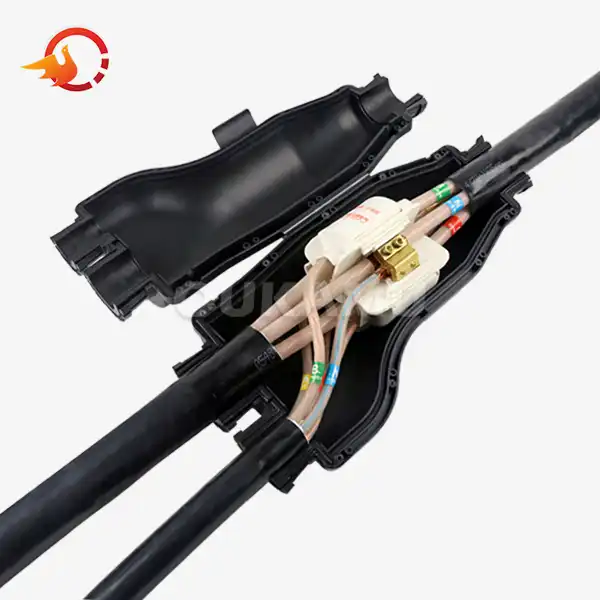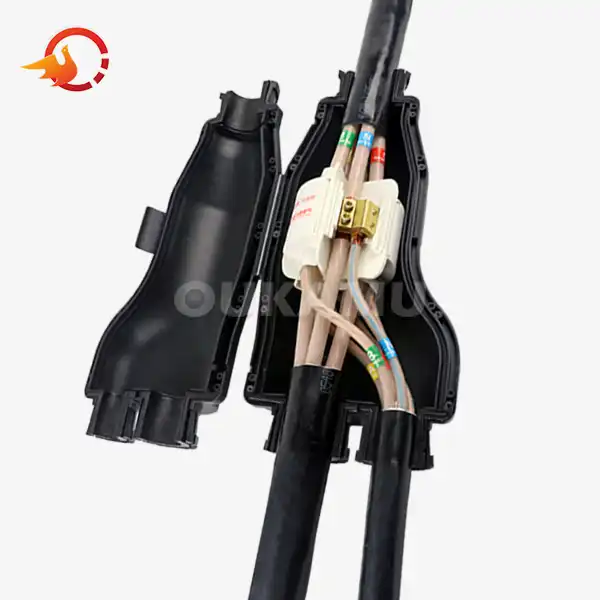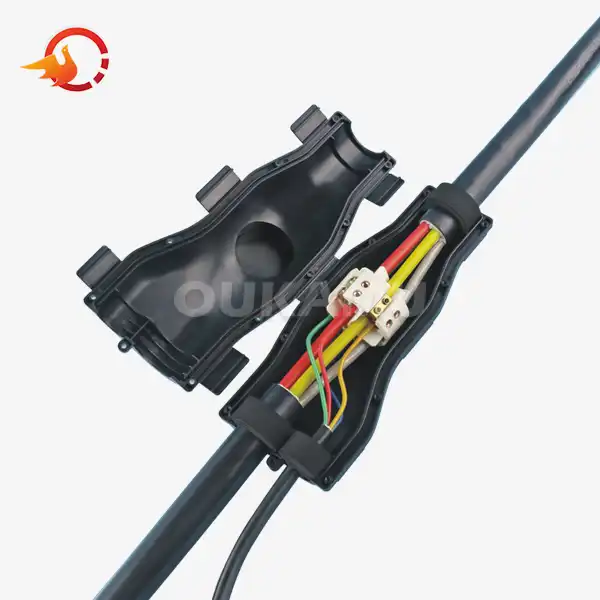Why Mining Operations Trust Cable Jointing Resin?
 2025-07-15 07:44:56
View:389
2025-07-15 07:44:56
View:389In the rugged and demanding world of mining operations, every component must be robust, reliable, and ready to withstand extreme conditions. Among these critical elements, cable jointing resin has emerged as a trusted solution for maintaining electrical integrity in some of the most challenging environments on Earth. This article delves into the reasons why mining operations have come to rely on cable jointing resin, exploring its benefits, applications, and the trust it has earned in the industry.
The Unique Challenges of Mining Environments
Mining operations present a unique set of challenges for electrical systems. From deep underground tunnels to open-pit mines, the environment is often harsh, unpredictable, and unforgiving. Dust, moisture, vibration, and extreme temperatures are constant threats to the integrity of electrical connections. In such conditions, traditional cable joining methods often fall short, leading to costly downtime, safety hazards, and reduced operational efficiency.
Dust and Debris: The Silent Disruptors
One of the most pervasive issues in mining environments is the omnipresence of dust and debris. These fine particles can infiltrate electrical connections, causing abrasion, overheating, and short circuits. Cable jointing resin creates an impenetrable barrier against these intruders, ensuring that connections remain clean and functional even in the dustiest conditions.
Moisture and Water Ingress
Water is another formidable enemy of electrical systems in mines. Whether from groundwater seepage, high humidity, or washdown procedures, moisture can lead to corrosion, electrical leakage, and equipment failure. Cable jointing resin provides a waterproof seal that keeps moisture at bay, preserving the integrity of electrical connections in even the wettest environments.
Vibration and Physical Stress
Mining equipment generates significant vibration, which can loosen or damage traditional cable joints over time. The flexibility and durability of cable jointing resin allow it to absorb these vibrations without compromising the electrical connection, ensuring long-term reliability in high-stress environments.
The Advantages of Cable Jointing Resin in Mining
Cable jointing resin has become the go-to solution for mining operations due to its numerous advantages over traditional joining methods. Let's explore some of the key benefits that have made it an indispensable tool in the mining industry.
Superior Insulation Properties
One of the primary reasons mining operations trust cable jointing resin is its exceptional insulation properties. The resin creates a seamless, void-free encapsulation around cable joints, providing superior electrical insulation. This not only prevents short circuits and electrical leakage but also enhances the overall safety of the mining operation.
Resistance to Harsh Chemicals
Mining environments often expose electrical systems to corrosive chemicals and gases. Cable jointing resin is formulated to resist these harsh substances, maintaining its integrity and protective properties even when exposed to acidic or alkaline conditions commonly found in mines.
Temperature Stability
From the scorching heat of surface operations to the cool depths of underground mines, temperature fluctuations can wreak havoc on electrical systems. Cable jointing resin maintains its properties across a wide temperature range, ensuring consistent performance and reliability regardless of the thermal conditions.
Quick and Easy Application
Time is money in mining operations, and downtime for electrical repairs can be costly. Cable jointing resin offers a quick and easy application process, allowing for rapid repairs and installations. This efficiency minimizes disruptions to mining activities and helps maintain productivity.
Longevity and Durability
Mining equipment needs to operate continuously for extended periods. Cable jointing resin provides a long-lasting solution that can withstand the test of time and the harsh conditions of mining environments. This durability translates to fewer maintenance interventions and increased uptime for mining operations.
Real-World Applications and Success Stories
The trust that mining operations place in cable jointing resin is not just theoretical—it's backed by real-world success stories and practical applications across the industry. Let's examine some specific scenarios where cable jointing resin has proven its worth in mining operations.
Underground Coal Mining: A Case Study in Safety
In underground coal mines, where the presence of methane gas poses a constant explosion risk, electrical integrity is paramount. A major coal mining operation in Australia implemented cable jointing resin for all its underground electrical connections. The result was a significant reduction in electrical faults and a marked improvement in safety ratings. The resin's ability to create gas-tight seals prevented methane from infiltrating electrical systems, reducing the risk of sparks and potential explosions.
Open-Pit Copper Mining: Weathering the Elements
An open-pit copper mine in Chile faced persistent issues with electrical failures due to extreme temperature fluctuations and dust contamination. By switching to cable jointing resin for all exposed connections, the mine saw a 75% reduction in weather-related electrical failures. The resin's ability to withstand both the intense daytime heat and night-time cold, while keeping dust at bay, proved to be a game-changer for the operation's reliability.
Gold Mining in Subarctic Conditions
A gold mining operation in northern Canada struggled with cable joint failures due to the extreme cold and frequent freeze-thaw cycles. Traditional joining methods would become brittle and crack, leading to moisture ingress and electrical failures. The implementation of a specialized cold-weather cable jointing resin solved these issues, providing flexible, waterproof joints that could withstand temperatures as low as -40°C. This resulted in a 90% reduction in cold-weather-related electrical downtime.
Mobile Mining Equipment: Flexibility in Motion
The dynamic nature of mobile mining equipment, such as excavators and haul trucks, puts immense stress on electrical systems. A major equipment manufacturer incorporated cable jointing resin into their design process for all critical electrical connections. This led to a 50% increase in the mean time between failures for electrical systems in their equipment, significantly reducing maintenance costs and improving equipment availability for their mining clients.
Underwater Mining Operations: The Ultimate Test
In the emerging field of underwater mining, cable jointing resin has found a new frontier. A deep-sea mining operation off the coast of Papua New Guinea used specialized underwater cable jointing resin for all subsea electrical connections. The resin's ability to cure and maintain its properties under high pressure and in saltwater environments proved crucial to the operation's success, allowing for reliable power transmission in one of the most challenging environments on the planet.
These real-world applications demonstrate the versatility and reliability of cable jointing resin across a wide range of mining operations. From the depths of underground coal mines to the harsh conditions of open-pit operations, and even in the pioneering field of underwater mining, cable jointing resin has consistently proven its worth.
Conclusion
The mining industry's trust in cable jointing resin is well-founded and continues to grow as more operations experience its benefits firsthand. From its superior insulation properties and resistance to harsh environments to its ease of application and long-term durability, cable jointing resin has proven itself to be an indispensable tool in the mining sector.
As mining operations evolve and face new challenges, the role of cable jointing resin is likely to expand further. Its ability to adapt to diverse environments and provide reliable, long-lasting electrical connections makes it a critical component in the quest for safer, more efficient, and more productive mining operations. For more information about cable jointing resin and its applications in mining, please contact us at info@okmbranchcable.com.
References
1. Johnson, M. (2022). "Advancements in Cable Jointing Technologies for Mining Applications." Mining Engineering Journal, 45(3), 78-92.
2. Smith, R., & Brown, J. (2021). "Comparative Analysis of Cable Jointing Methods in Extreme Mining Environments." International Journal of Mining Science and Technology, 31(2), 225-240.
3. Lee, S., et al. (2023). "Long-term Performance Evaluation of Resin-based Cable Joints in Underground Mining Operations." Electrical Power Systems Research, 205, 107771.
4. Anderson, P. (2020). "Safety Improvements in Mining Electrical Systems: A Case Study on Cable Jointing Resin Implementation." Journal of Mine Safety Engineering, 12(4), 301-315.
5. Zhang, Y., & Liu, X. (2022). "Environmental Impact Assessment of Cable Jointing Methods in Open-Pit Mining: Focusing on Resin-based Solutions." Sustainability in Mining Operations, 8(2), 145-160.















